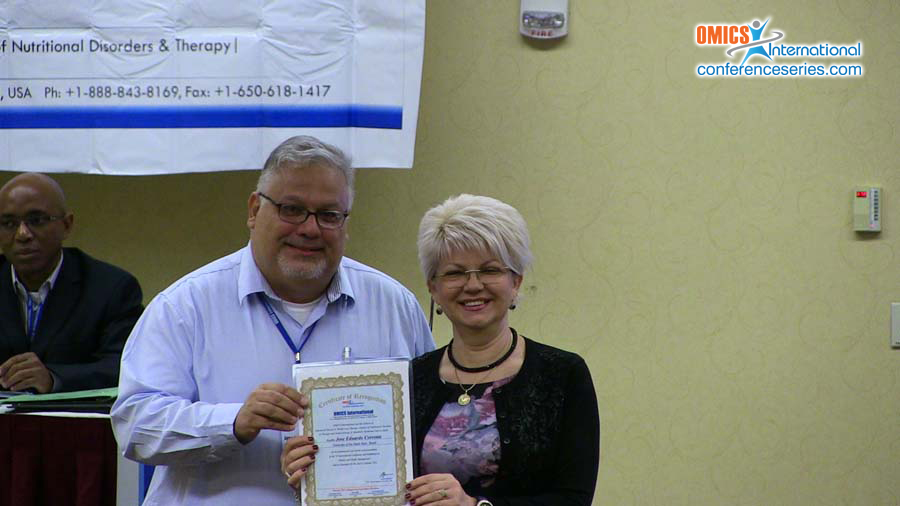
Jose Eduardo Corrente
University of Sao Paulo State, Bioscience Institute Botucatu
Brazil
Title: Nutrient intakes according to eating patterns and nutritional status for older people
Biography
Biography: Jose Eduardo Corrente
Abstract
The aim of this work was to analyze the nutrient intakes according the eating pattern for older people. From March to June of 2011, 172 subjects of 60 years and more and registered in the basic health units of Botucatu city – São Paulo Brazil were evaluated. Anthropometric measures were obtained to classify in obese (Body Mass Index – BMI ≥ 30 kg/m2) and non-obese (Body Mass Index – BMI < 30 kg/m2). A food frequency questionnaire was applied to identify eating patterns and transformed the nutrient daily intakes. It was found that high mean of phosphorus and alcohol was consumed by obese men and selenium for obese women. Consumption of high means of protein, fiber, phosphorus, magnesium, sodium, potassium, retinol, folate, cuprum, vitamin B12 and E were consumed by people with high adherence to the “healthy” pattern compared with the ones with low adherence. Those with high adherence to “snacks and weekend meals” pattern consumed lower mean of vitamin C and retinol. A high adherence to “Fruits” pattern was represented by higher consumption of saturated fat, sodium and selenium, and lower average of fiber, magnesium and manganese; high adherence to “Light and whole foods” pattern represented higher consumption of fiber, vitamin C and potassium; high adherence to the “bland diet” represents lower consumption of protein and more carbohydrates; high adherence to the patter “traditional” represents greater consumption of vitamin D, fibers, iron, folate, copper, and manganese, and less consumption of vitamin B12. As a conclusion, it was observed coherence in the major analyzed nutrients among patterns enabling a better characterization of the intake behavior for older people.



